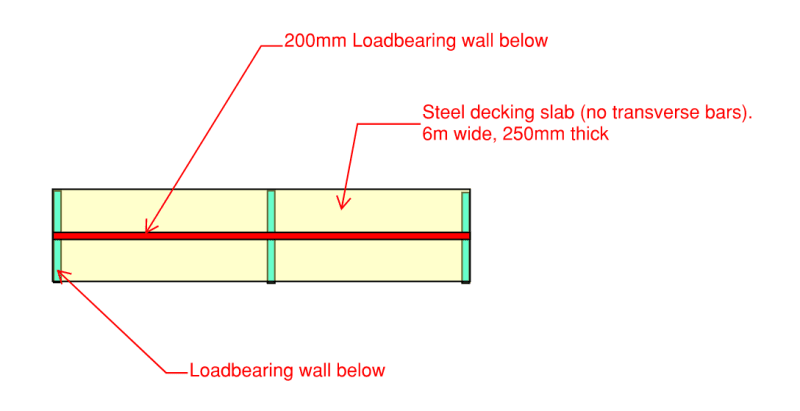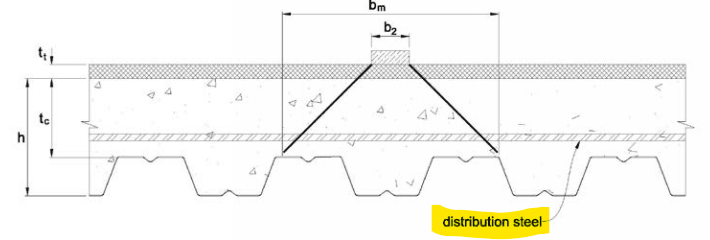Thomas2121
Structural
- Jul 17, 2021
- 8
I have this 6m bondek slab that needs to design to take transfer line load along its span.
I am wondering for both strength and deflection check what width do I need to take for where transfer load is and why?
I have used FEA for this full model and the results differ so much compared to my hand cal using one-way slab with say 1m width. And I guess the reason is because the stiffness in another direction is considered. ie the transfer loads is distributed in both X and Y direction, the whole slab will take the transfer load nearly equally. After I change the stiffness in Y direction to near 0 the result is close to my hand cal.
So now my question is, since I don't have transverse bars in the slab. does that mean I cannot use the stiffness in Y direction to distribute the loads? In another word, I can't treat it like a two-way slab right? If the answer is no then back to my first question, what width should I take for one-way slab analysis?
What if I place bars on top of the deck? Do you design steel decking slab as two-way?
hank you.

I am wondering for both strength and deflection check what width do I need to take for where transfer load is and why?
I have used FEA for this full model and the results differ so much compared to my hand cal using one-way slab with say 1m width. And I guess the reason is because the stiffness in another direction is considered. ie the transfer loads is distributed in both X and Y direction, the whole slab will take the transfer load nearly equally. After I change the stiffness in Y direction to near 0 the result is close to my hand cal.
So now my question is, since I don't have transverse bars in the slab. does that mean I cannot use the stiffness in Y direction to distribute the loads? In another word, I can't treat it like a two-way slab right? If the answer is no then back to my first question, what width should I take for one-way slab analysis?
What if I place bars on top of the deck? Do you design steel decking slab as two-way?
hank you.



